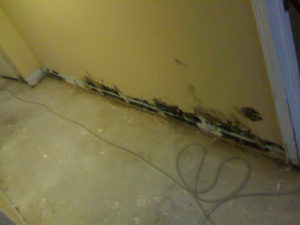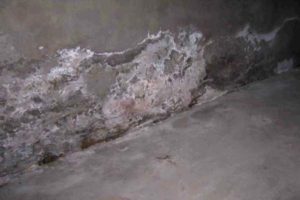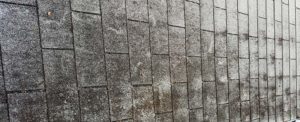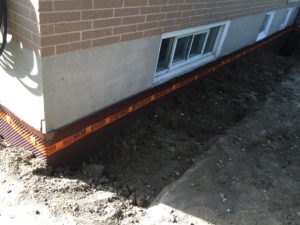Crawl Space Waterproofing – ACCL Waterproofing
Crawl Space Waterproofing – ACCL Waterproofing

You may not give your crawl space much thought, but it is a vital structural element that lifts your house off the ground to help prevent flooding and pest infestations. Crawl spaces, unlike slab foundations, allow for the installation of wiring, plumbing, and ducting for simple access at a fraction of the expense of a basement. You can also use the crawl space to store objects that aren’t used often.
There is one drawback to crawl spaces: they, like basements, are prone to moisture problems. Because the crawl room is below the main living area, you may believe that water incursion is unimportant. This, however, is incorrect. Learn why you need to waterproof your crawl space and what options you have for keeping moisture out.
WATERPROOFING OF CRAWL SPACE BENEFITS
For a variety of reasons, homeowners are urged to waterproof their crawl spaces.
TEMPERATURE MANAGEMENT
The temperature in the rest of your house is affected by high humidity in the crawl area, making it feel colder or hotter than it should be. To keep comfortable, you may have to turn on the heater or air conditioner more frequently.
Because a waterproofed crawl space is cold and dry, it has less of an impact on home comfort. As a result, you save money on energy by lowering the length of time your HVAC system is running.
IMPROVING THE QUALITY OF INDOOR AIR
Up to 50% of the air in a crawl space can escape and enter the dwelling room. If the air is wet, moldy, and fumy, it will certainly affect the quality of your indoor air. As a result of overexposure to moldy air, sensitive people may experience headaches, respiratory distress, and allergy symptoms.
Mold growth is slowed when your crawl space is clean and dry. This keeps hazardous spores out of your family’s lungs, making breathing simpler for everyone.
PROTECT THE STRUCTURAL INTEGRITY OF YOUR HOME
Excess moisture can cause wood to decay, metal to rust, and drywall to be damaged. Mold and termites thrive in this type of climate, which can eat away at your home’s structure. Your floor joists may decay to dangerous levels if left unattended, resulting in exorbitant repair costs.
The addition of a vapour barrier to the crawl space keeps moisture out. This provides you with the assurance that your home is safe from the ravages of wood rot, mold, and termite infestation.
ELECTRICAL HAZARDS MUST BE REDUCED
Moisture and electricity are incompatible. Water problems could result in electrical shorts, rusty wires, or even a house fire if you have wiring running through your crawl space.
Maintaining the safety of your family requires ensuring that your electrical system is clear of dampness. Consider waterproofing the crawl space if you find difficulties with your wiring. This will reduce the chance of electrocution and fire.
PLUMBING AND DUCTWORK SHOULD BE PRESERVED
Water pipes, sewer lines, and air ducts are almost certainly running through your crawl area. This location makes them simple to maintain and repair, although rust can develop if the humidity is too high. Corrosion can cause pipes to break or ducting to deteriorate over time.
With crawl space waterproofing, you can extend the life of your plumbing and air duct systems.
MAINTAIN THE VALUE AND INSURABILITY OF YOUR HOME
Mold growth, structural damage, poor air quality, and comfort difficulties are all problems linked with excess moisture in the crawl space that might hinder your ability to sell your home in the future. Even if you don’t plan to move, having a damp crawl area can make homeowners insurance more difficult to obtain.
A vapour barrier in the crawl space may not raise property value immediately, but it may prevent problems from arising that could be detrimental. In this sense, crawl space waterproofing is an excellent investment that pays off handsomely.
SIGNIFICANCE OF WATERPROOFING FOR CRAWL SPACE
Early detection of moisture problems offers you the opportunity to address the problem before irreversible harm occurs. Unfortunately, because the crawl space is one of the least visited regions in your home, the vast majority of water leaks go unreported for a long time.
Plan to inspect your crawl space twice a year, once in the spring and once in the fall, to ensure you identify leaks early. When you do, keep an eye out for the following symptoms that your crawl space needs waterproofing:
- Water that isn’t moving
- a musty smell
- Mold and mildew development
- An infestation of insects or rodents
- Pipes or ductwork that are rusted
- Wood that has rotted
- The walls of the crawl space have white deposits on them.
- Your home’s exterior paint is peeling.
- Throughout the house, there are issues with air quality.
WATERPROOFING METHODS FOR CRAWL SPACE
The type of foundation you have, where the water is coming from, if you have a storm drain near your property, and the grade of the soil around the foundation all influence the strategies utilised to waterproof a crawl space.
The key to waterproofing your crawl area is to use a vapour barrier that is both waterproof and condensation-proof. This keeps moisture from evaporating and entering the crawl space in the soil beneath and around your home’s foundation. A vapour barrier is a heavy-duty polyethylene sheet that has been particularly constructed to deflect water rather than absorb it.
Waterproofing techniques can be used on the outside of your house or inside the crawl area.
WATERPROOFING ON THE OUTSIDE
Because excavation is required to waterproof a crawl space from the outside, this method is seen as time-consuming. Exterior waterproofing is best done at the initial construction phase or in conjunction with another renovation, repair, or landscaping job.
To keep water out, exterior waterproofing entails putting a moisture barrier around the foundation walls. A drainage system is frequently constructed to help alleviate hydrostatic pressure on the walls, which can lead to the formation of fractures over time.
WATERPROOFING IN THE INTERIOR
Interior waterproofing is typically just as effective as external waterproofing and requires less disruption. Installing a vapour barrier on the dirt floor, partway or all the way up the walls, and occasionally even the ceiling is the first step. Crawl space encapsulation is a method of keeping all outside moisture out of the crawl area.
After that, further methods such as a sump pump, dehumidifier, ventilator, or gravity discharge system may be utilized to drain water and dry off any remaining moisture in the crawl space. Combining internal waterproofing systems may be the most effective method.
Take advantage of the winter months to have us look at your basement and help you determine how best to address your basement leakage problems.

Get the job done RIGHT – Hire a professional Waterproofing company!
Want to know more about our waterproofing process? Give us a call at 416-759-2995
Rely On our ACCL Wet Basement Waterproofing Experts
Don’t Drown in a wet basement!
Rely On Wet Basement Waterproofing Experts
If you’ve noticed foundation cracks, spots, water, mold, and mildew, don’t ignore the signs or it could lead to more damage and possible health effects.
The basement waterproofing specialists at ACCL Waterproofing know how to repair your basement and foundation walls and keep moisture out of your basement. We would be pleased to develop a guaranteed solution to keep your basement dry!
Rod Leaks: ACCL Waterproofing
Rod Leaks: ACCL Waterproofing
If water gets into your basement, it can cause irreversible damage and render the space useless. Tie rod leaks, which are small holes in your foundations that can let water in, are one of the easiest problems to repair but also a very common port of entry for leaky basements.
With our entire selection of professional solutions, Direct Waterproofing can help you cure any and all basement and foundation damp problems.
Tie rods are short steel rods used to hold forms together during the construction of your home so that concrete can be poured. When the concrete is poured, the rods are removed, leaving weak points of entry where water can eventually make its way into your home.
What Should You Be Aware Of?
Most homes are built with tie rods, however some more modern homes employ snap ties, which do not have the same issue. If your home’s foundations have holes caused by tie rods, it’s usually a good idea to get them repaired, especially if water damage begins to appear.
If your tie rod holes are leaking, you may notice a little stain on the inside of your basement walls the size of a dime, or a water line that runs all the way down to the floor. Water can pool or flood your basement if the leak is significant. A wall normally has between 5 and 8 tie rods, and it will be the external walls that you are concerned with. As a result, water damage may emerge in orderly lines where the tie rods used to be.
What Causes This to Happen?
Small metal rods called tie rods are put into the concrete form during the initial building of many homes to hold the inner and outer forms together and give the structure with which the concrete can be poured. They are spaced around 18 inches apart, occasionally in two rows.
They are normally removed fully after construction, leaving a hole. The builders may attempt to hide the tie rod holes with hydraulic cement and a coating, at least visually, but this might wear off over time, revealing a particularly vulnerable spot for water to enter. Given that the tie rod holes are essentially hollow all the way through, water will always seek the path of least resistance and flow through them if possible. This is why the issue is so widespread. If water gets through, it will inevitably end up in your basement!
What Options Do You Have?
In the event of tie rod hole leaks, Direct Waterproofing has a variety of options available, and we can handle a single leaking tie hole or a whole wall of them. The job is usually simple and inexpensive, and it entails the careful administration of a high-grade sealant injection, also known as a swell plug, to fill and cement the hole.
If there are more serious problems, we can look into providing permanent interior or exterior waterproofing solutions to ensure that water never gets into your basement again.
What are Tie Rod Holes, and what do they do?
Tie rod holes are typically drilled into a foundation wall. The concrete foundation is reinforced with smooth steel rods. The rods keep the concrete forms from bulging under the weight of wet concrete. The tie rods are inserted between the concrete forms. Even under the great pressure of the wet concrete filling the forms to produce foundation walls, the concrete forms do not expand outward with the rods in place. The wet concrete pours over and around the tie rods as it is poured. The builders remove the tie rods once the concrete cures, leaving tiny holes known as tie rod holes.
Contractors usually fill the tie rod holes with hydraulic cement or another suitable material after removing the tie rods. Freeze-thaw cycles and ground movement, on the other hand, may cause the patching work to wear out over time. When groundwater seeps into the basement through the gaps in the foundation walls, this could cause problems. The tie rod holes have no bearing on your building’s overall strength and stability. They may, however, result in leaks in the basement and foundations.
Tie rod openings are very common in older homes. If you discover water stains or tiny holes where water is pouring or seeping through, you should act quickly. A leaking water line to the floor is another common sign. Water may pool in the basement or even create floods in extreme circumstances. Professional tie rod hole repair is recommended. To avoid the problem reoccurring, get the holes repaired by a skilled and reliable waterproofing contractor.
Take advantage of the warmer summer months to have us look at your basement and help you determine how best to address your basement leakage problems.

Get the job done RIGHT – Hire a professional Waterproofing company!
Want to know more about our waterproofing process? Give us a call at 416-759-2995
Rely On our ACCL Wet Basement Waterproofing Experts
Don’t Drown in a wet basement!
Rely On Wet Basement Waterproofing Experts
If you’ve noticed foundation cracks, spots, water, mold, and mildew, don’t ignore the signs or it could lead to more damage and possible health effects.
The basement waterproofing specialists at ACCL Waterproofing know how to repair your basement and foundation walls and keep moisture out of your basement. We would be pleased to develop a guaranteed solution to keep your basement dry!
There are eight reasons why sump pumps fail – ACCL Waterproofing
Sump Pump Failures
A sump pump, like a first aid box, a fire extinguisher, or your home’s security system, is rarely used, but it can be an invaluable tool in an emergency. Sump pumps aid in the mitigation and prevention of such disasters by immediately emptying flood water from a home’s basement through an external output pipe. And, like most emergency equipment, it’s critical to keep your sump pump in good working order and free of mechanical issues. If you don’t, you could end up with a flooded basement and thousands of dollars in damage. We hope that by identifying the eight causes of sump pump failure when it is most required, you will be able to avoid these possible issues.
Power Outage:
Storms and power outages frequently coincide to create a lethal combination that results in flooded basements around the country. This is owing to the fact that big rainstorms result in excess water, and a power outage renders your sump pump incapable of draining water. Fortunately, you may avoid this problem by purchasing and installing a backup generator for your sump pump. If you lose power during a storm, you can manually turn on this generator to prevent flooding in your basement.
Faulty Switches:
A jammed switch is the most typical mechanical issue that leads to sump pump failure. The float that activates the switch becomes ineffective when the pump shifts inside the basin, forcing it to lodge against the side of the pump, rendering it ineffective. It’s also possible that debris will clog the float, rendering it ineffective. Both of these issues may usually be resolved with some cleaning and repositioning of your sump pump within the basin.
Pump is Overworked:
If your sump pump isn’t the proper size or can’t handle the appropriate horsepower, it can easily be overwhelmed by a flow of water. A sump pump that is too large will overwork and have a shorter lifespan, whereas a sump pump that is too small will underwork and have a shorter lifespan. You can also solve the issue of size by determining how much horsepower your sump pump requires. To appropriately deal with potential floods, you’ll need a 1/3 horsepower sump pump capable of pumping 35 gallons of water per minute. If your home is on a high water table, a 1/2 horsepower sump pump capable of pumping 60 gallons of water per minute is recommended.
Discharge Pipe Frozen or Clogged:
Flood water will pour back down the discharge pipe and all over your basement if your sump pump’s discharge pipe is frozen or clogged with debris. While it is impossible to prevent your discharge pipe from freezing, you can build a special discharge line that permits water to depart your basement even if your main discharge pipe is frozen solid. Make sure your discharge pipe’s opening is shielded with a grate to keep it from clogging. A protective cover will keep dirt and small animals out of your discharge pipe, preventing it from clogging.
Maintenance Defects:
Your sump pump may only require a good cleaning and some quarterly maintenance. Running a vinegar solution through your sump pump, ensuring sure your float is unrestricted, and cleaning all the vents on your sump pump and the air holes on your discharge line can all be done in a matter of minutes.
Getting Older:
Years of wear and tear finally cause your sump pump to fail after 7 to 10 years of service. Although some sump pumps can last much longer than this, it is suggested that you replace your sump pump after ten years to guarantee optimal safety and efficiency.
Installation Error:
While the two remaining probable failures are uncommon, you may want to look into them if none of the other options help you solve the problems your sump pump is having. It’s likely that your sump pump was placed wrongly at first, resulting in its current ineffectual status. Several things could have gone wrong during the original installation of your sump pump:
- On the discharge line, there was no check valve installed.
- In the discharge line, there is no air relief hole.
- Using Gravel or Dirt to Set Up Your Sump Pump
Defective Product:
It’s possible that your sump pump is malfunctioning, however it’s doubtful. It’s critical to test your sump pump as soon as possible after installation to ensure it’s in good working order.
We hope that by determining the causes of sump pump failure, you will be able to keep your basement dry and have some extra cash in your pocket.
Take advantage of the warmer summer months to have us look at your basement and help you determine how best to address your basement leakage problems.

Get the job done RIGHT – Hire a professional Waterproofing company!
Want to know more about our waterproofing process? Give us a call at 416-759-2995
Rely On our ACCL Wet Basement Waterproofing Experts
Don’t Drown in a wet basement!
Rely On Wet Basement Waterproofing Experts in Toronto
If you’ve noticed foundation cracks, spots, water, mold, and mildew, don’t ignore the signs or it could lead to more damage and possible health effects.
The basement waterproofing specialists at ACCL Waterproofing know how to repair your basement and foundation walls and keep moisture out of your basement. We would be pleased to develop a guaranteed solution to keep your basement dry!
How to Safely Remove Mold: ACCL Waterproofing
How to Safely Remove Mold: ACCL Waterproofing
Mold and mildew are quite widespread in both homes and businesses. Both of these annoyances thrive in damp, wet, and humid environments, such as the restroom. Mold and mould removal can be dangerous to your health, especially if you have a large infestation. Mold can aggravate allergies, trigger asthma attacks in asthmatics, and irritate nasal and respiratory passages, causing sneezing, coughing, and watery eyes.

Mould Removal and Treatment
The majority of homeowners are capable of dealing with minor infestations in their homes. If you have asthma or allergies that are aggravated by mould, however, it is best to leave mould removal to a professional, regardless of the magnitude of the infestation. Small infestations can be treated using home cleansers that are designed to kill mould and mildew.
Mildew is a type of mould that, if left untreated, will continue to develop and expand. Use protective equipment such as rubber gloves, a face mask, and goggles while cleaning areas such as between the grout lines in bathroom wall tiles to prevent mould spores from getting on your body, into your nasal and respiratory passages, and into your eyes. To release the mould, start by spraying it with an appropriate cleanser and letting it sit for a few minutes.
- Scrub with a sponge, toothbrush, or other soft bristles device to thoroughly get into the cracks and crevices.
- Work carefully and thoroughly, focusing on one area at a time. In a pail of lukewarm water, rinse your sponge or toothbrush.
- Continue to clean the area until there are no more symptoms of mould or mildew.
- Rinse showers, tubs, and sinks thoroughly with clean water.
- Finally, re-spray the areas with cleanser and let it dry naturally.
- To prevent mould and mildew from returning in the bathroom, it’s a good idea to treat the areas you just cleansed every time you shower or bathe.
You should also make it a habit to clean these places at least once a week. You can still use an appropriate household cleaner in other sections of the house with smaller infestations, such as where mould and mildew are growing on walls, ceilings, baseboards, or flooring.
Just remember to treat a small area first to check for discoloration, or be prepared to spend money on mould repairs after the mould has been eradicated, such as repainting the walls or replacing portions of drywall. After you’ve treated and removed the mould, place sponges and toothbrushes in a zip-lock plastic bag and throw them away. You should not preserve these goods since mould spores have already grown in them and can continue to proliferate.
Mold in Basements
Your basement is another part of your home that can get infested with mould. Basements are notorious for being damp. Using a dehumidifier to remove excess moisture from the air is one approach to prevent mould in damp basements. Basement waterproofing treatments to seal walls are the simplest approach to keep dampness out and prevent mould.

Changes in temperature and dampness concerns under the home’s foundation or along the external support walls can cause concrete to let water seep through and seem moist. Basements and residences that have recently been flooded can also develop black mould as a result of water damage. Again, waterproofing your basement will aid in the resolution and prevention of these and other difficulties.
When Should You Hire a Professional Mold Removal Company?
For serious mould infestations in the house, expert mould repair and removal services are recommended. When compared to minor infestations, the health risks associated with severe infestations are significantly higher.

Even for mild infestations, you should utilize professional removal services if you are asthmatic or have serious allergies, as previously said. It’s critical to get rid of the mould as early as possible while also identifying and resolving the source. Your mould remediation expert knows how mould grows and develops, as well as how to identify the source of dampness and moisture that feeds the infestation.
Take advantage of the warmer summer months to have us look at your basement and help you determine how best to address your basement leakage problems.

Get the job done RIGHT – Hire a professional Waterproofing company!
Want to know more about our waterproofing process? Give us a call at 416-759-2995
Rely On our ACCL Wet Basement Waterproofing Experts
Don’t Drown in a wet basement!
Rely On Wet Basement Waterproofing Experts
If you’ve noticed foundation cracks, spots, water, mold, and mildew, don’t ignore the signs or it could lead to more damage and possible health effects.
The basement waterproofing specialists at ACCL Waterproofing know how to repair your basement and foundation walls and keep moisture out of your basement. We would be pleased to develop a guaranteed solution to keep your basement dry!
Waterproofing Membranes: ACCL Waterproofing
What are waterproofing membranes?
A waterproofing membrane is a thin layer of water-tight material that is laid over a surface. This layer is continuous and does not allow water to pass through it. For example, on a flat terrace, a waterproofing membrane could be laid above the structural slab and below the finish tiles. This will ensure that water does not seep into the structural slab. The tiles and membrane must be laid over a filler material that is sloped to ensure that water flows into sumps and drains. Any water that remains as puddles over the tiles is likely to seep into the slab over time, so puddles are to be avoided at all costs.

Why is it important?
Many commercial and residential buildings have poor quality waterproofing which can cause reporting annual water damage due to the builders inadequate methods. Water damage is a high number of building defects and needs to be dealt with immediately to save money and sometime even the property.
The benefits of waterproofing includes:
-
Protection from leakage and damage
-
Safety
-
Strengthening the structure of the building
-
Mold protection
-
Reducing costs for maintenance and increasing value of the property
Waterproofing membranes are an essential component to protect a home as stated above with the numerous benefits it brings. Regardless of the scale, size, location or type of building, it is a must have repair for the health and safety of the home owners and the structure of the home.
Types of waterproofing membranes:
Foundation waterproofing
The foundation of the home is what keeps the building in place and is IMPORTANT to make sure it is securely waterproofed and secure. If anything impacts the foundation in a hazardous level it becomes unsafe to inhabit the property until the issue is properly solved. Water/moisture leakage and molding is the number one factor of foundation issues that deals with needing membranes. When the foundation begins to leak it wets the soil beneath the home and causes the ground to expand and lose strength, leading to cracks and more damage to the property. Liquid-applied and sheet membranes are the common use to deal with waterproofing the foundation.
Basement waterproofing
Basements tend to allow water to seep right into the foundation causing issues with molding. Exterior waterproofing is recommended for basements, particularly older ones, so the water can be halted at the source. If membrane is not properly installed some back-up methods include sump pumps or installing a dehumidifier. The best result though would be to waterproof using a PVC blend membrane on the external walls of the property.
Keep your home waterproofed:
Waterproofing is designed to prevent water damage and structural damage to a building or feature. Although many people tend to overlook the importance of waterproofing and assume it to be a costly affair when it comes to their homes, the prevention of water-based damage will reduce the need for future maintenance and keep the property safe from leakages and cracked foundations.
Get the job done RIGHT – Hire a professional Waterproofing company!
Want to know more about our crack injection process? Give us a call at 416-759-2995
Rely On our ACCL Wet Basement Waterproofing Experts
If you’ve noticed foundation cracks, spots, water, mold, and mildew, don’t ignore the signs or it could lead to more damage and possible health effects.
The basement waterproofing specialists at ACCL Waterproofing know how to repair your basement and foundation walls and keep moisture out of your basement. We would be pleased to develop a guaranteed solution to keep your basement dry!
DEALING WITH A WET BASEMENT
In order to fix the problem of a wet basement, a homeowner will have to take several steps to avoid further problems. The first step is to find the source of the water. A person can get water in their basement from many different sources.

It could be a leaky pipe. The homeowner should check any of the water lines in the basement and see if they can spot any leaks.
If the water is coming from the pipes that are behind the walls this will require the help of a professional to determine the cause and to find a way to fix it. It is also possible that the water is coming into the home from the outside. If the home is not placed on the property so that the water drains away from the home, it can be a serious issue. Most home foundations are made with concrete. Concrete is a porous material. If the water from the outside drains towards the home, it will end up with a homeowner having a wet basement.
If the water is coming through the foundation from the outside, a company that specializes in waterproofing a home will need to be called in. They can seal up the concrete and make sure the water drains away from the home to make sure the water does not get into the basement.
Once a person has found a solution to the wet basement problem, they will need to re-mediate any damage that has occurred. The water in the basement needs to be dried up or a person could end up dealing with a problem with mold. Water can also cause structural damage to a home. Any material that has been damaged by water will have to be either replaced or cleaned in a way to retard mold growth.

